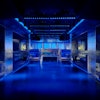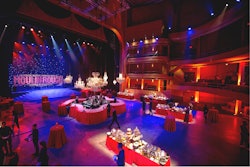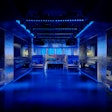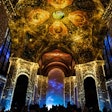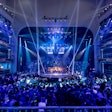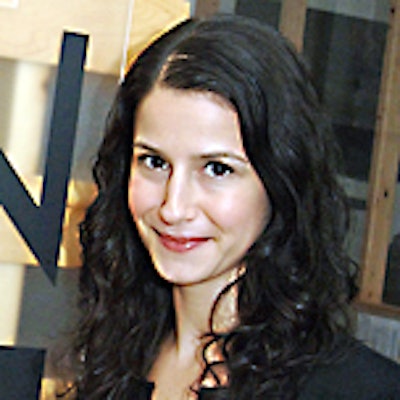
Elizabeth Shaffer
What She Plans: Gen Art, launched by brothers Ian and Stefan Gerard in 1993, is a profit and not-for-profit hybrid that hosts events based around film, fashion, art, and music. Since starting as vice president of events in early 2005, Shaffer has been responsible for overseeing more than 100 annual events for groups of 50 to 5,000 people in New York, Chicago, Miami, Los Angeles, and San Francisco, as well as other markets. Gen Art’s events roster includes shopping nights; art events in artist’s studios, private collector’s homes, or local galleries; advance movie screenings; concerts; runway shows of new designers; and more. In 2005, Gen Art’s events brought in more than $5 million in sales, and the company’s nonprofit arm gives more than $100,000 a year in direct grants for emerging talents.
Age: 30
Staff: New York-based Shaffer has two event staff members in each of the five markets.
Career Path: Born in Berkeley, California, Shaffer grew up in Washington, D.C., and majored in women’s studies at Brown University. Postgraduation, she landed a fund-raising position for Hillary Clinton’s Senate campaign, and soon Clinton invited Shaffer to help plan the White House’s millennium celebration. “I clinked champagne glasses with Jack Nicholson at the turn of the millennium,” she says. “It was pretty crazy.” Next, Shaffer took a job with the Democratic National Committee and, in effect, Al Gore’s presidential campaign, and traveled all over the country. After a stint with Deloitte & Touche, Shaffer got an M.B.A. at NYU’s Stern School of Business, and then worked at Capitale before joining Gen Art last year.
Where She Lives: Union Square
Biggest Work Challenge: “The Gen Art Film Festival in New York is a huge undertaking. It’s seven days long. The premiere is at the Ziegfeld, and there are after-parties each night. We get the talent and directors to come, and there’s transportation to organize and lots of sponsor integration.”
Favorite Filmmaker: Steven Spielberg. “Jaws is my favorite movie of all time.”
Gen Art typically partners with several sponsors when hosting its events, which showcase emerging artists to its members. How do you attract these sponsors and what sort of incentives do you offer them?
Sponsors often come to us for our audience—21- to 39-year-old, collegeeducated professionals, 50 percent male, 50 percent female, 85 percent single—because they understand how difficult it is to target this market, and they see we’ve been able to do it successfully. We give them the opportunity to get their brands in front of an exclusive group of tastemakers and trendsetters, the media, V.I.P.s, and celebrities, and we come up with creative and innovative ways to get their products in our members’ hands. There is nothing trade-showy about what we do, and there’s certainly no women in tight T-shirts sampling new alcoholic beverages.
What challenges do you face when integrating a brand into an event?
The biggest challenge is constantly coming up with new ways for our audience to experience a new brand or an old brand that wants to reinvent itself. It’s not easy, because our members don’t want something shoved down their throats. We want people to see the brand in a different way and to enjoy the product so that they have an experience.
With Acura, we drove a car into one of the Gen Art Film Festival after-parties and had guests get into the car and act out a scene from a well-known movie. We supplied them with props, a director, and a blue screen, and we filmed the scene and burned it onto a CD as a giveaway. It was something they could take home that’s not just a branded coffee mug. Beyond that, we got the guests in the car, feeling the car—having an overall memory in the car.
The Gen Art members are at an age when they generally go out a lot. How do you create events that continue to surprise and inspire them?
I try to find nontraditional venues for our events. This year at Sundance we produced a Beastie Boys concert with MySpace and Aquafina at a ski lodge, which was totally different because most of the parties at Sundance are held in town houses or restaurants.
For our music program, the challenge is coming up with new ways for people to hear live music. We don’t go to traditional music venues like Hammerstein Ballroom. Instead we go to hip clubs or bars and build a stage so that people are surprised. Beyond that, I’d say we host 30 percent of our events in raw spaces, which is challenging and invigorating at the same time because you’re creating an environment. It’s a blank canvas.
Ultimately, what we try to do is give our audience backstage passes to the worlds of art, fashion, music, and film. Inviting our members to talk with artist Hunt Slonem at his 50,000-square-foot studio loft is an example of how we provide special behind-the-scenes tours.
You have also held fashion shows on a pirate ship and atop a swimming pool. What inspires you to come up with such imaginative ideas?
I think finding the inspiration is the challenge. I’m always going to lots of other events. I seek out trends through magazines and books, and I try to stay ahead of where this particular demographic is going. What are they interested in? How are they spending their time? What are their leisure activities? It’s a constant p444chological game.
What is your most successful event?
New Guard was an idea our senior fashion manager came up with in L.A., and it’s been received so well that we tried it in New York and San Francisco this year. With typical fashion shows, you see fashion in one way only. With New Guard we decided to do fashion vignettes where we create an environment for those models to live in, and it was almost like a live diorama. This year one designer had kids playing in a playground, and the audience came by, watched, and then moved on to the next vignette, which just happened to be a pirate ship. New Guard is a way to see clothes move on people who are actually moving and not just catwalking.
Gen Art has been recognized both for its parties and for discovering talent, especially in film and fashion. How does that affect what you do?
We’ve been around for a long time, but we’ve gone through tremendous change and growth over the past several years in terms of the kinds of sponsors we work with and the scale of the events we produce. Giving Zac Posen his first fashion show and launching the careers of Rebecca Taylor and Shoshanna is the reason everyone in the fashion industry knows who we are, and it provides some legitimacy and credibility to what we do, from a sponsor standpoint. We have all these buyers and industry people who come to our events because they know Gen Art is going to show them at least a couple of designers they are going to want to buy or write about. Richard Shepard, who came out with the film The Matador last year, is one of our alumni filmmakers, as is Brad Anderson, who went on to make Happy Accidents and The Machinist.
While we’re known for our parties—and that’s great because that’s a big part of what we do—our members also know they’re going take away something from our events, whether they buy a CD from an unsigned band or a piece of art from an emerging artist.
Gen Art’s philosophy is to give up-and-comers a chance—a philosophy you also employ when selecting vendors to work with. What sort of results have you seen from emerging vendors?
I’ve worked with the Robert Isabells of the world—people who have carved a niche for themselves and are tremendously well respected. But I’ve also worked with great Rhode Island School of Design students who are trying to start their own businesses. These kids are able to go into a venue and come up with a completely different look. And they’re also younger and tend to know about new technology that some of the vendors who’ve been around for a while don’t know about. Emerging vendors are also in a position where they can lend their time and expertise in a way we can afford. We’ve worked with a lot of graffiti artists, for example, who want to get their work in front of corporate sponsors. In the last 10 years graffiti has been recognized as an amazing art form, and a lot of major corporate sponsors have used graffiti in ad campaigns and print materials. Graffiti artists will donate their services just to get in front of our audience.
—Courtney Thompson
Posted 09.19.06
What She Plans: Gen Art, launched by brothers Ian and Stefan Gerard in 1993, is a profit and not-for-profit hybrid that hosts events based around film, fashion, art, and music. Since starting as vice president of events in early 2005, Shaffer has been responsible for overseeing more than 100 annual events for groups of 50 to 5,000 people in New York, Chicago, Miami, Los Angeles, and San Francisco, as well as other markets. Gen Art’s events roster includes shopping nights; art events in artist’s studios, private collector’s homes, or local galleries; advance movie screenings; concerts; runway shows of new designers; and more. In 2005, Gen Art’s events brought in more than $5 million in sales, and the company’s nonprofit arm gives more than $100,000 a year in direct grants for emerging talents.
Age: 30
Staff: New York-based Shaffer has two event staff members in each of the five markets.
Career Path: Born in Berkeley, California, Shaffer grew up in Washington, D.C., and majored in women’s studies at Brown University. Postgraduation, she landed a fund-raising position for Hillary Clinton’s Senate campaign, and soon Clinton invited Shaffer to help plan the White House’s millennium celebration. “I clinked champagne glasses with Jack Nicholson at the turn of the millennium,” she says. “It was pretty crazy.” Next, Shaffer took a job with the Democratic National Committee and, in effect, Al Gore’s presidential campaign, and traveled all over the country. After a stint with Deloitte & Touche, Shaffer got an M.B.A. at NYU’s Stern School of Business, and then worked at Capitale before joining Gen Art last year.
Where She Lives: Union Square
Biggest Work Challenge: “The Gen Art Film Festival in New York is a huge undertaking. It’s seven days long. The premiere is at the Ziegfeld, and there are after-parties each night. We get the talent and directors to come, and there’s transportation to organize and lots of sponsor integration.”
Favorite Filmmaker: Steven Spielberg. “Jaws is my favorite movie of all time.”
Gen Art typically partners with several sponsors when hosting its events, which showcase emerging artists to its members. How do you attract these sponsors and what sort of incentives do you offer them?
Sponsors often come to us for our audience—21- to 39-year-old, collegeeducated professionals, 50 percent male, 50 percent female, 85 percent single—because they understand how difficult it is to target this market, and they see we’ve been able to do it successfully. We give them the opportunity to get their brands in front of an exclusive group of tastemakers and trendsetters, the media, V.I.P.s, and celebrities, and we come up with creative and innovative ways to get their products in our members’ hands. There is nothing trade-showy about what we do, and there’s certainly no women in tight T-shirts sampling new alcoholic beverages.
What challenges do you face when integrating a brand into an event?
The biggest challenge is constantly coming up with new ways for our audience to experience a new brand or an old brand that wants to reinvent itself. It’s not easy, because our members don’t want something shoved down their throats. We want people to see the brand in a different way and to enjoy the product so that they have an experience.
With Acura, we drove a car into one of the Gen Art Film Festival after-parties and had guests get into the car and act out a scene from a well-known movie. We supplied them with props, a director, and a blue screen, and we filmed the scene and burned it onto a CD as a giveaway. It was something they could take home that’s not just a branded coffee mug. Beyond that, we got the guests in the car, feeling the car—having an overall memory in the car.
The Gen Art members are at an age when they generally go out a lot. How do you create events that continue to surprise and inspire them?
I try to find nontraditional venues for our events. This year at Sundance we produced a Beastie Boys concert with MySpace and Aquafina at a ski lodge, which was totally different because most of the parties at Sundance are held in town houses or restaurants.
For our music program, the challenge is coming up with new ways for people to hear live music. We don’t go to traditional music venues like Hammerstein Ballroom. Instead we go to hip clubs or bars and build a stage so that people are surprised. Beyond that, I’d say we host 30 percent of our events in raw spaces, which is challenging and invigorating at the same time because you’re creating an environment. It’s a blank canvas.
Ultimately, what we try to do is give our audience backstage passes to the worlds of art, fashion, music, and film. Inviting our members to talk with artist Hunt Slonem at his 50,000-square-foot studio loft is an example of how we provide special behind-the-scenes tours.
You have also held fashion shows on a pirate ship and atop a swimming pool. What inspires you to come up with such imaginative ideas?
I think finding the inspiration is the challenge. I’m always going to lots of other events. I seek out trends through magazines and books, and I try to stay ahead of where this particular demographic is going. What are they interested in? How are they spending their time? What are their leisure activities? It’s a constant p444chological game.
What is your most successful event?
New Guard was an idea our senior fashion manager came up with in L.A., and it’s been received so well that we tried it in New York and San Francisco this year. With typical fashion shows, you see fashion in one way only. With New Guard we decided to do fashion vignettes where we create an environment for those models to live in, and it was almost like a live diorama. This year one designer had kids playing in a playground, and the audience came by, watched, and then moved on to the next vignette, which just happened to be a pirate ship. New Guard is a way to see clothes move on people who are actually moving and not just catwalking.
Gen Art has been recognized both for its parties and for discovering talent, especially in film and fashion. How does that affect what you do?
We’ve been around for a long time, but we’ve gone through tremendous change and growth over the past several years in terms of the kinds of sponsors we work with and the scale of the events we produce. Giving Zac Posen his first fashion show and launching the careers of Rebecca Taylor and Shoshanna is the reason everyone in the fashion industry knows who we are, and it provides some legitimacy and credibility to what we do, from a sponsor standpoint. We have all these buyers and industry people who come to our events because they know Gen Art is going to show them at least a couple of designers they are going to want to buy or write about. Richard Shepard, who came out with the film The Matador last year, is one of our alumni filmmakers, as is Brad Anderson, who went on to make Happy Accidents and The Machinist.
While we’re known for our parties—and that’s great because that’s a big part of what we do—our members also know they’re going take away something from our events, whether they buy a CD from an unsigned band or a piece of art from an emerging artist.
Gen Art’s philosophy is to give up-and-comers a chance—a philosophy you also employ when selecting vendors to work with. What sort of results have you seen from emerging vendors?
I’ve worked with the Robert Isabells of the world—people who have carved a niche for themselves and are tremendously well respected. But I’ve also worked with great Rhode Island School of Design students who are trying to start their own businesses. These kids are able to go into a venue and come up with a completely different look. And they’re also younger and tend to know about new technology that some of the vendors who’ve been around for a while don’t know about. Emerging vendors are also in a position where they can lend their time and expertise in a way we can afford. We’ve worked with a lot of graffiti artists, for example, who want to get their work in front of corporate sponsors. In the last 10 years graffiti has been recognized as an amazing art form, and a lot of major corporate sponsors have used graffiti in ad campaigns and print materials. Graffiti artists will donate their services just to get in front of our audience.
—Courtney Thompson
Posted 09.19.06


